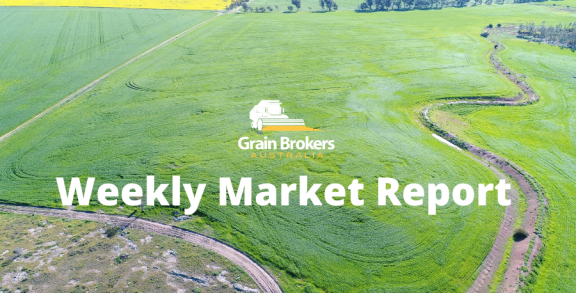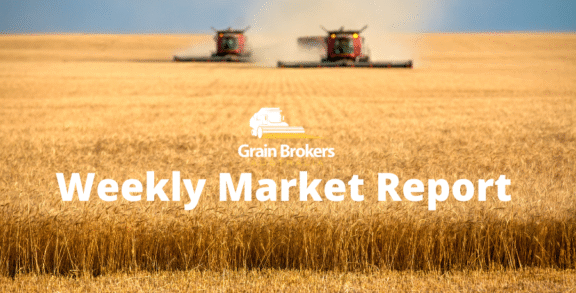
Egypt was back in the wheat market last week, taking advantage of the recent drop in prices by booking its second tender purchase for June and the country’s single largest acquisition of wheat in ten years. Egypt’s state grain buyer, the General Authority for Supply Commodities, announced last Thursday it had bought 815,000 metric tonne from four countries – France, Romania, Russia and Bulgaria – as food insecurity concerns continue to build in the region.
The purchase comprised 350,000MT of French wheat, 240,000MT of Romanian wheat, a mere 175,000MT from Russia and a single 50,000MT cargo from Bulgaria, with payment for all purchases at sight against a suitably endorsed letter of credit. Not only was the quantity purchased unusually large, but so too was the three-month delivery period with cargoes booked for August, September and the first half of October.
Only four days before the tender purchase, the Egyptian Minister of Supply, Ali Moselhi, advised that Egypt had agreed to buy 180,000 tons of wheat from India, much less than the 500,000MT previously reported. The government has also purchased 3.92 million metric tonne of wheat from domestic producers so far this season, an increase of around 12 per cent compared to the same time last year.
The biggest surprise in last week’s tender result was French sales coming in at double those of Russia. The Black Sea exporter is traditionally the largest supplier of wheat to Egypt, especially in the August to October period when the harvest is in full swing, supplies are increasing, and exports generally accelerate.
Only three successful cargoes out of Russia in a tender of this magnitude, and no offers in the October period, highlight the challenges facing Russian exporters this season, despite reports of a record crop on the horizon. Sanctions haven’t directly targeted its agriculture sector, but they are having an impact. Banks have been forced to cut back lines of credit, and ship owners are reducing their exposure to the region.
One of the biggest impediments for Russian exporters has been the strength of its currency against the United States dollar. Despite media reports last week that Russia has defaulted on a tranche of foreign debt for the first time since the Bolshevik Revolution more than a century ago, its currency continues to rally.
After hitting an all-time low in March following the invasion of Ukraine, the ruble has mounted a stunning recovery, last Wednesday reaching its highest rate since May 2015. For some, the strong ruble is seen as a sign that the Russian economy is withstanding the Western sanctions. Nonetheless, it has significantly decreased the competitiveness of Russian wheat in the global export market.
The primary reason for the ruble’s strength since the war’s early days is the rising price of oil and natural gas, exports of which have continued almost unabated, bringing billions of dollars into the Russian economy. At the same time, Russian imports have been reduced significantly due to the Western sanctions.
The strength in the Russian ruble has also forced a rethink by the Kremlin on the formula for calculating its grain export tax for the 2022/23 marketing season, which commenced last Friday. The change in the formulas will ease the ruble-dollar exchange rate’s impact on the export taxes’ size with the stated aims of supporting grain exports while ensuring the stability of domestic prices.
The Agriculture Ministry advised that the base price for calculating the wheat export tax would change from US$200 per metric tonne to 15,000 rubles/MT. Using the exchange rate at the time of 52.8768 rubles to the dollar equates to US283.68/MT. The government has also changed the base prices for calculation of both the barley and corn export taxes to 13,875 rubles/MT, replacing the previous mark of US$185/MT. The US$1,000/MT base price for calculating the sunflower oil export tax will change to 82,500 rubles/MT.
The export tax is calculated as 70 per cent of the difference between the average free on board (FOB) export prices during the 60 days preceding the day of calculation and the base price. It is published each Friday and enters into force on Wednesday of the following week. A higher base price effectively means the export tax will be lower.
The final tax value under the old formula was set at US$146.10/MT, or approximately 7,725 rubles/MT, for the week commencing June 29. The first tax under the new base price regime will come into effect in the week beginning July 6 and has been set at 4,600 rubles/MT. This equates to US$87/MT using the aforementioned exchange rate.
Leading agricultural consultancy Sovecon advised the market last week that it expected the higher base price would reduce the export tax by around US$60/MT, using a Russian FOB wheat price of US$380/MT and an exchange rate of 52 rubles to the US dollar. Their mail was pretty close to the mark!
On the production front, Sovecon recently increased its Russian wheat estimate from 88.6 million metric tonne to a record 89.2MMT, hinting a smaller winter wheat crop in the south due to dryness will be more than offset by a bigger spring wheat crop. Advisory firm Agritel is pegging the crop almost 4MMT lower at 85.4MMT, also suggesting bigger yields and a higher planted area in the Central and Volga regions will compensate for a smaller crop in the south.
Sovecon has also increased its Russian wheat exports forecast to a record 42.6MMT on the back of higher production, high stocks and increased competitiveness following the revision to the export tax. The world needs the wheat, but that is a huge ask in this environment.
The availability of freight remains a limiting factor as shipowners are reluctant to send ships into the region for fear of striking sea mines as well as being sanctioned. Very expensive insurance, or no insurance at all, for grain transiting the Black Sea and the strong ruble also complicate the equation.
Will the export tax changes provide more comfort to exporters selling out the curve? Will the growers be proud owners of their produce this season, complicating the trade’s procurement program? Will the war escalate, and with it more Western sanctions on Russia?
Wheat exports will undoubtedly happen, but it is hard to envisage record volumes. It seems unlikely that Russian exporters will be able to trade a forward book with confidence, and it will be extremely tough to trade volume in the spot market. The war strained market is facing its moment of truth and global consumer are about to test its resolve.
Call your local Grain Brokers Australia representative on 1300 946 544 to discuss your grain marketing needs.





